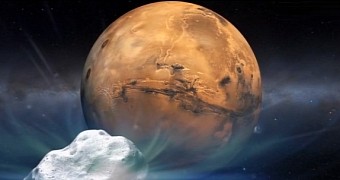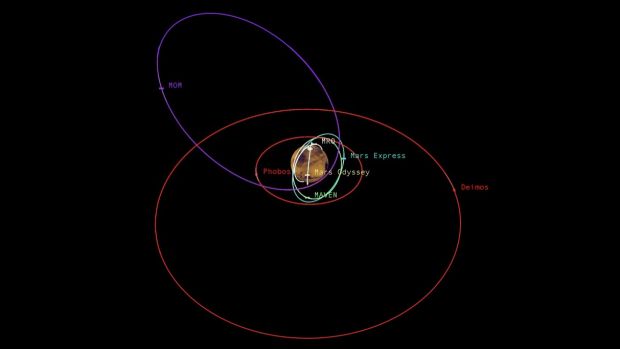Apart from the rovers trekking across its surface, the Red Planet has a few other uninvited visitors to put up with: a total of five active orbiters that are currently circling it and studying it from afar.
Of these orbiters, NASA's Mars Atmosphere and Volatile Evolution and India's Mars Orbiter Mission spacecraft reached the planet only last year.
ESA's Mars Express spacecraft has been stalking Mars since 2003. Lastly, NASA's Mars Odyssey and Mars Reconnaissance Orbiter missions have been ongoing since 2001 and 2006, respectively.
There's also NASA's Mars Global Surveyor orbiter, which reached the Red Planet in 1997, but this one is no longer operational and so can be left out of the count.
With or without the Mars Global Surveyor spacecraft floating about in a comatose state, the fact of the matter is that there's quite a lot of traffic going on around the planet, high up in its atmosphere.
So much so that there is a real risk that the space vehicles' orbits could bring them close enough to one another to collide. To avoid such incidents, NASA stepped in to control traffic.
The space agency makes an excellent traffic warden
The movements of the operational spacecraft circling Mars are tracked with the help of NASA's Deep Space Network. As illustrated in the image below, the spacecraft travel on very different orbits.
Even so, NASA researchers can anticipate encounters with a high degree of accuracy and alert mission scientists about threats to their space vehicles. A few maneuvers later, the orbiters are rearranged around Mars.
“We track all the orbiters much more closely now. There's still a low probability of needing a maneuver, but it's something we need to manage,” said NASA scientist Robert Shotwell.
It was in early January that a potential incident was avoided when researchers figured out that the Mars Atmosphere and Volatile Evolution orbiter was about to come within 2 miles (3 kilometers) of the Mars Reconnaissance Orbiter vehicle.
This encounter was predicted a couple of weeks in advance, and so mission scientists had no trouble convincing the orbiters to keep away from one another.
As other spacecraft will be sent to Mars in the years to come, traffic around this planet will get even busier, and better monitoring will be in order.
Even so, the Red Planet has a long way to go until the traffic around it is even remotely as busy as it is around Earth. Thus, NASA tells us that, these days, our planet is orbited by over 1,000 active spacecraft.

 14 DAY TRIAL //
14 DAY TRIAL // 

